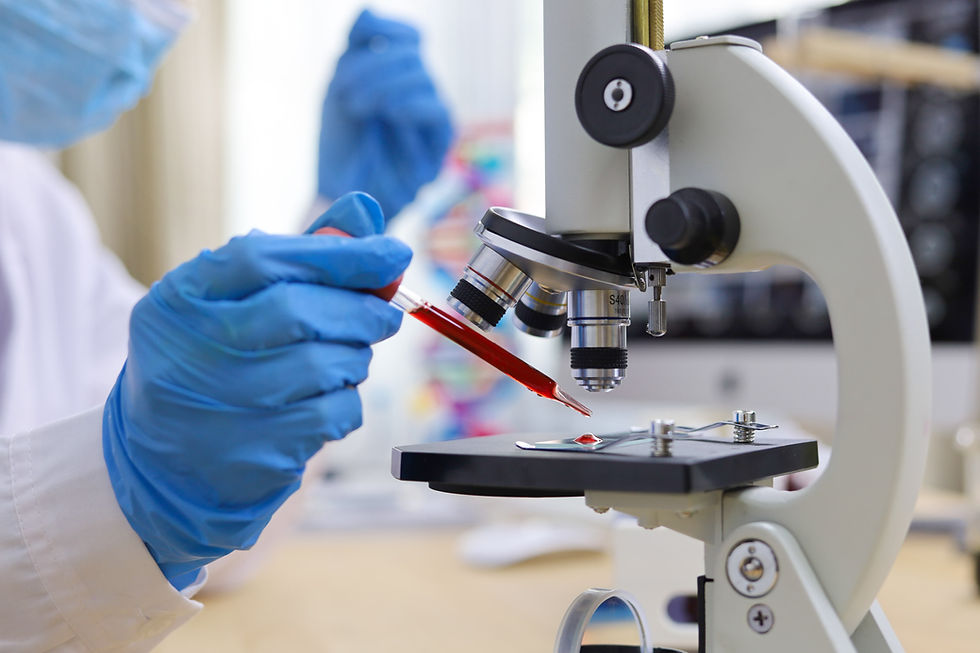What is... Jaundice?
- Apex Experts

- Oct 8
- 3 min read
You’ve probably heard the word jaundice before, maybe in a hospital drama, or mentioned in passing during a medical conversation. But what is jaundice exactly? And why does it turn people yellow?
Let’s break it down simply. Whether you're a medical student, a medico-legal professional, or just someone who’s curious, this is your plain-English guide to jaundice: what causes it, what it looks like, and why it matters.
The Definition: What is Jaundice?
Jaundice (also known as icterus) is the yellowing of the skin, sclerae (whites of the eyes), and mucous membranes due to an excess of bilirubin in the blood.
Sounds technical? Don’t worry, we’ll unpack that.
Firstly, What is Bilirubin?
Bilirubin is a yellow-orange pigment produced during the normal breakdown of red blood cells. When red blood cells are recycled, the haem part of haemoglobin is broken down into unconjugated (indirect) bilirubin.
Here’s how the body normally deals with it:
Liver Processing: The liver takes in the unconjugated bilirubin and converts it into conjugated (direct) bilirubin, which is water-soluble.
Excretion: It’s then excreted into the bile, goes into the intestines, and eventually leaves the body via faeces (which is why stools are brown).
If any part of that pathway breaks down, bilirubin can build up, and that’s when jaundice appears.
Types of Jaundice
Understanding jaundice becomes easier if you split it into three categories, based on where the problem occurs:

1. Pre-Hepatic (Before the Liver)
This happens before bilirubin gets to the liver. It’s usually due to increased breakdown of red blood cells -
known as haemolysis.
Examples:
Sickle cell anaemia
Thalassaemia
Haemolytic disease of the newborn
Clue: You’ll usually see unconjugated hyperbilirubinaemia.
2. Hepatic (Inside the Liver)
This is where the liver itself is damaged or not working properly, so it can’t process bilirubin effectively.
Examples:
Hepatitis (viral or alcoholic)
Cirrhosis
Liver cancer
Gilbert’s Syndrome (a mild, inherited condition)
You might see mixed conjugated and unconjugated bilirubin levels.
3. Post-Hepatic (After the Liver)
Also called obstructive jaundice, this is due to a blockage in the bile ducts preventing bilirubin from leaving the liver.
Examples:
Gallstones
Pancreatic cancer
Biliary strictures
Clue: Conjugated bilirubin can’t get out, so it backs up into the bloodstream.
Signs and Symptoms
Jaundice isn’t just about yellow skin, though that’s the most obvious sign.
Common symptoms include:
Yellowing of eyes and skin
Dark urine (tea-coloured)
Pale stools
Itching (especially in obstructive jaundice)
Fatigue or malaise
Abdominal pain (particularly with gallstones or hepatitis)
Sometimes, jaundice is the only sign that something more serious is going on internally.
How Is It Diagnosed?
Doctors will typically start with:
Blood tests (LFTs or Liver Function Tests):
Bilirubin levels (conjugated vs unconjugated)
ALT, AST (liver enzymes)
ALP and GGT (cholestasis markers)
Imaging:
Ultrasound (to check for obstruction)
CT or MRI if needed
Further Tests: Viral hepatitis screen, autoimmune panels, or biopsy depending on the clinical context.
A Note on Neonatal Jaundice
Many newborns develop physiological jaundice within the first few days of life. It’s usually harmless and self-resolves as the baby’s liver matures.
But if it develops too early or worsens, it could indicate more serious problems, like haemolytic disease or biliary atresia, and should be investigated.
Why It Matters in Medico-Legal Contexts
In legal and clinical negligence settings, jaundice can be a red flag for:
Missed diagnoses (e.g., failing to identify hepatitis or obstructive causes)
Delayed investigations (e.g., not acting on abnormal LFTs)
Neonatal injury claims (e.g., untreated hyperbilirubinaemia leading to kernicterus)
Understanding the basic pathophysiology helps non-clinical professionals assess whether there were reasonable opportunities to intervene.
Treatment: It Depends on the Cause
Jaundice is not a disease itself, it’s a symptom of something else. So treatment depends on identifying and managing the underlying issue.
Examples:
Haemolytic anaemia → Treat the cause or use transfusion
Hepatitis → Antivirals or supportive care
Gallstones → Surgery (e.g., cholecystectomy)
Liver cancer → Oncology referral
In some cases, jaundice may be reversible, in others it signals advanced disease—especially in cirrhosis or malignancy.
Final Thoughts
Jaundice might look like just a colour change, but it’s often a clinical clue that the body’s internal systems are struggling.
If you're in healthcare, law, or just like knowing how things work, understanding jaundice means understanding how blood, bile, and the liver all interact, and what happens when that system breaks down.
